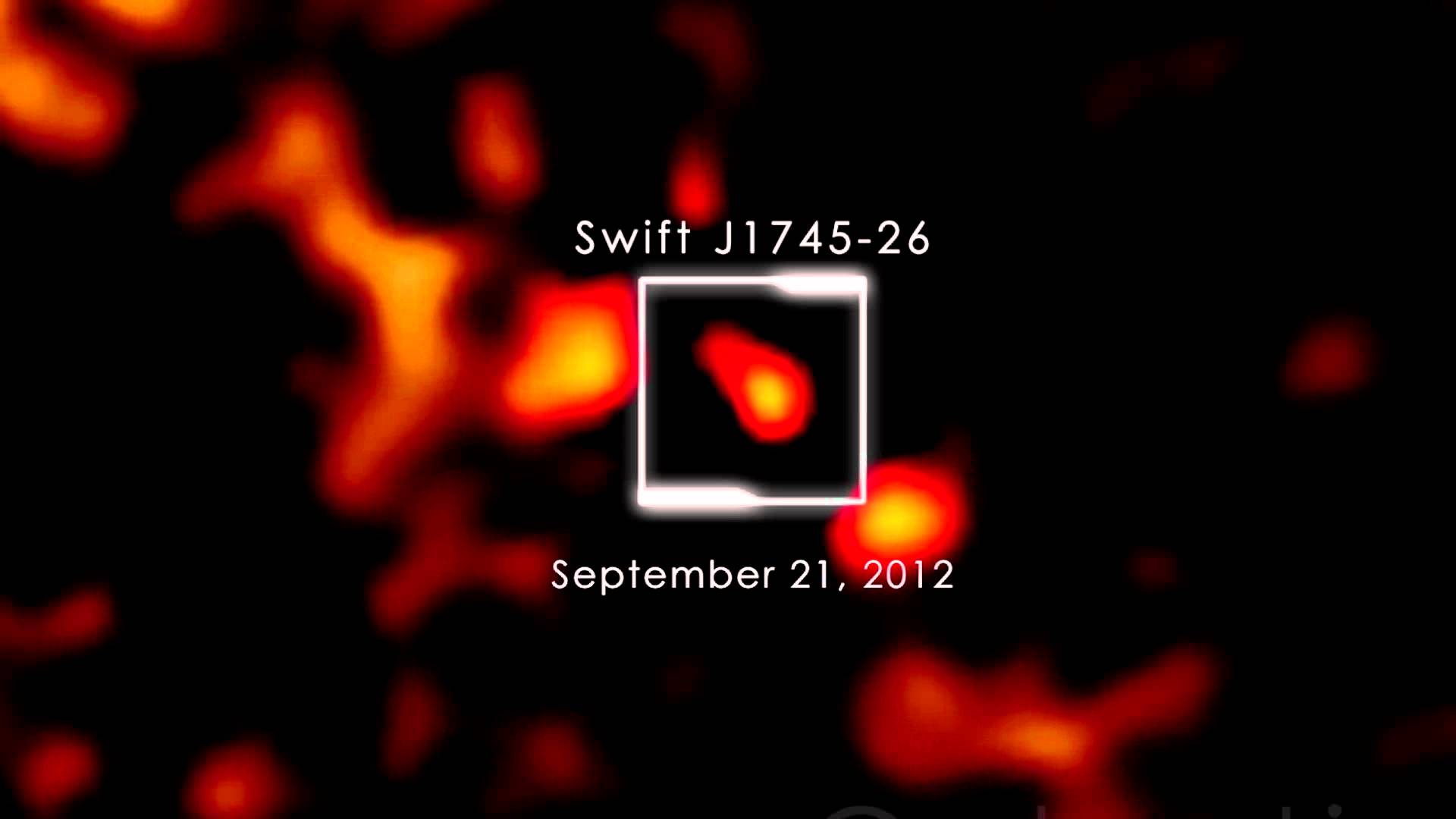Astronomers using NASA’s Swift satellite recently detected a rise in high-energy X-rays from a source toward the center of our Milky Way galaxy. The outburst, produced by a rare X-ray nova, came from a previously unknown stellar-mass black hole.
An X-ray nova is a short-lived X-ray source that appears suddenly, reaches its emission peak in a few days and then fades out over a period of months. The outburst arises when a torrent of stored gas suddenly rushes toward one of the most compact objects known, either a neutron star or a black hole.
The rapidly brightening source triggered Swift’s Burst Alert Telescope twice on the morning of Sept. 16, and once again the next day. Named Swift J1745-26 after the coordinates of its sky position, the nova is located a few degrees from the center of our galaxy toward the constellation Sagittarius. While astronomers do not know its
precise distance, they think the object resides about 20,000 to 30,000 light-years away in the galaxy’s inner region.
Ground-based observatories detected infrared and radio emissions, but thick clouds of obscuring dust have prevented astronomers from catching Swift J1745-26 in visible light.

